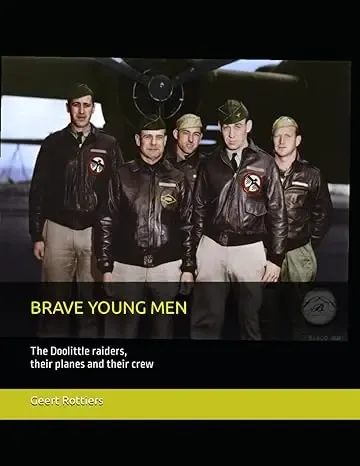Raider in the spotlight
The idea of Francis S. Low
FRANCIS S. LOW
The three senior staff officers conveyed President Roosevelt's message in a very small circle to the respective staff officers of the two army components, the army (which also included the air force) and navy.
They had to think under strict secrecy about developing a plan to bomb Japan. And this as soon as possible. The idea of bombing Japan was met with skepticism from the military leadership. It seemed an unfeasible idea.
Understandable because it was an impossible assignment at that time as no American bomber was able to carry out this assignment because of the too far distance between America and Japan.
However, on January 10, 1942, Captain Francis S. Low, a staff officer on the staff of Admiral Ernest J. King, Commander in Chief of the United States Navy, was in Norfolk, Virginia, for inspection of the United States Navy's newest and newly completed aircraft carrier, the USS Hornet.
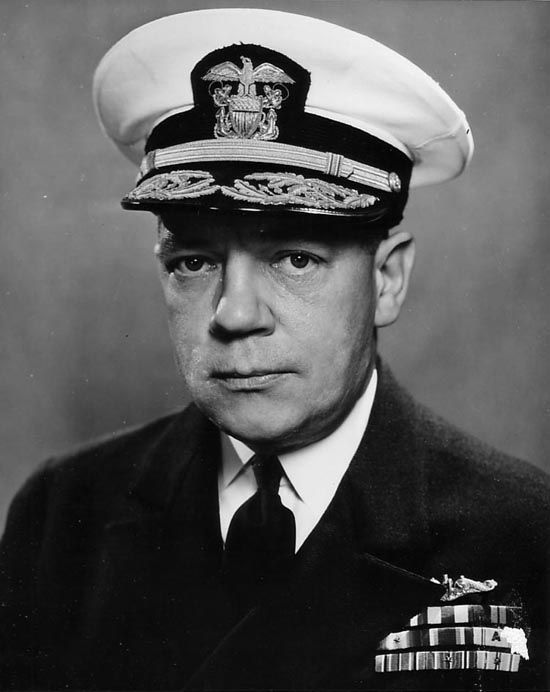
Francis Low
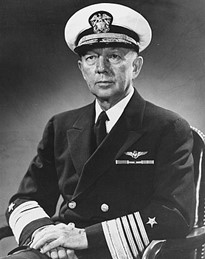
Donald Duncan
Part 1
While Francis Low’s plane was getting prepared to leave for Washington, Low looked out the window at the outline of an aircraft carrier painted on the runway that helps training fighter pilots in short carrier takeoffs and landings. He also saw bomber planes practicing bombing targets from low altitude.
The thought flashed through Low's mind that, if such bombers could take off from an aircraft carrier, they could bomb Japan.
He thought of Admiral King's words: “The United States is still reeling from the attack on Pearl Harbor the previous month, and Japan continues to win one victory after another in the Pacific region of Southeast Asia. President Roosevelt wants a bombing raid on Japan as soon as possible to boost his country's morale.” During his flight to Washington, Low pondered the idea he had and developed it further in his mind.
The Navy fighter aircraft stationed on an aircraft carrier was unable to complete the mission. Their range was only 480 km or 300 miles and an aircraft carrier in particular could not get that close to Japan. It would be sunk.
Bombers, however, had a longer range. If these could take off from an aircraft carrier, that aircraft carrier would not have to sail so close to Japan. At least that was Captain Francis S. Low's idea.
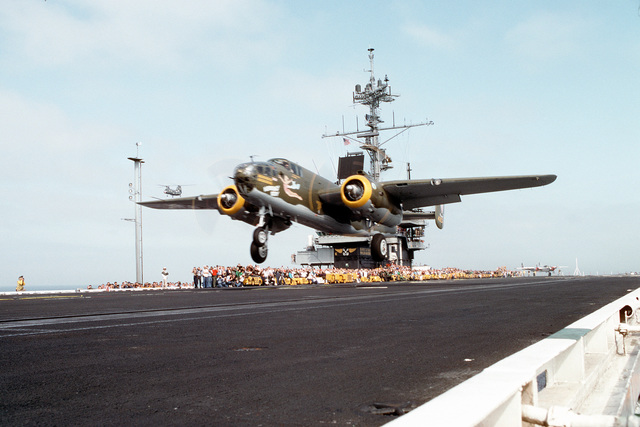
The idea of taking off from an aircraft carrier with heavely loaded bombers was never practised before
“I think I have an idea”, Low said to his superior. Low presented his plan to his chief of staff Amdmiral King. Low wrote, by hand and at the request of the admiral, a 30-page scenario on how he saw things and how the attack was to be carried out.
Admiral King in turn submitted the plan and accompanying written notes to his colleague Chief of Staff General Arnold and later also to General Marschall. General Arnold was responsible for the air force within the ground army. Both commanders reacted very enthusiastically to Low's idea that laid the groundwork for the attack on Japan.
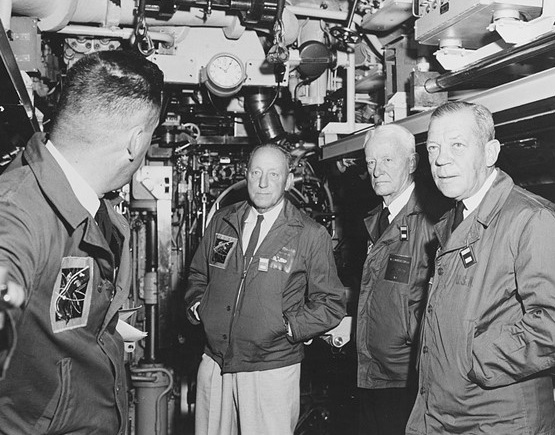
Low (right) with Admirals Nimitz (second from right) and Lockwood during the visit of submarine Nautilus in June 1957.
Admiral King also presented the idea to Captain Donald B. Duncan, one of the air operations staff officers on Admiral King's staff. King had asked him to find out whether it was technically possible to have bombers take off from an aircraft carrier. At the time it was considered impossible.
General Arnold, Chief of Staff of the Air Force, contacted Major Jimmy Doolittle, who was a famous aviator at the time. Test pilot and stunt pilot. By the 1920s, he had won air races, set and broken aviation records and was the first pilot to fly an aircraft entirely by instrumentation.
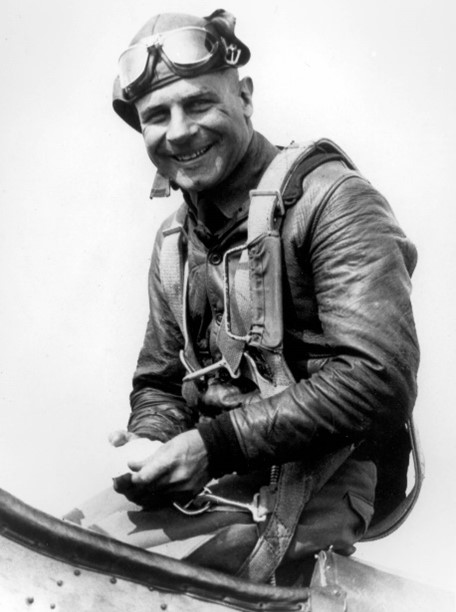
Jimmy Doolittle

Wright Army Air Field logo
Doolittle left the Air Force in 1930 but returned to active duty on July 1, 1940. He was then stationed at Wright Army Air Field.
General Arnold had him brought to Washington and made Doolittle responsible in the Air Force for working out a plan of attack to bomb Japan (Special Aviation Project No 1). General Arnold immediately promoted Major Doolittle to Lieutenant Colonel.
Francis S. Low (15 August 1894 – 22 January 1964) was a decorated officer of the United States Navy with the rank of four-star Admiral. An expert in the Submarine warfare, Low is credited with the idea that twin-engined Army bombers could be launched from an aircraft carrier. This idea was later adopted for the planning of Doolittle Raid. Low distinguished himself as Chief of Staff, U.S. Tenth Fleet during the U-Boat campaign in the Atlantic Ocean and completed his career in 1956 as Commander, Western Sea Frontier, and Commander Pacific Reserve Fleet.
Vice Admiral Donald B. Duncan (1896-1975) was an officer of the United States Navy. In 1941, he was the first commander of the USS Long Island, the Navy's first escort aircraft carrier. As the air operations officer to Admiral Ernest J. King, he assisted with the planning for the Doolittle Raid, and was the one who proposed the use of both the B-25 Mitchell bombers and the USS Hornet (CV-8) for the raid. He was then appointed to be the first commanding officer of the Essex (CV-9). He was the Deputy Chief of Naval Operations (Air) from 6 March 1947 to 20 January 1948. He commanded the 2nd Task Fleet after 1948, and was the Vice Chief of Naval Operations from 1951 to 1956. An oral history recorded in 1964 is in the Butler Library at Columbia University.
Part 2
The rough and daring plan proposed by Captain Francis S. Low to Admiral King was written out manually by himself in February 1942. It was as follows:
- Only mainland Japan would be attacked, no islands;
- Try to take off with bombers from an aircraft carrier;
- A navy squadron would bring bombers about 450 nautical miles (or about 830 km) off the Japanese coast. Once there, the aircraft would take off from that aircraft carrier to bomb critical places and locations in Japan;
- The aircraft would then fly on to China/Russia to eventually join the American 10th Air Force, an American unit that was established in the war zone of China, Myanmar and India;
The bombers would possibly remain in China/Russia after the raid. This could be seen as a sign of American war support for China/Russia. They could also be exchanged for fighter aircraft. One bomber for two fighters. As mentioned earlier, its crews could stay in Asia or try to get back to America;
- The mission had to remain top secret. During the preparations only the participants could be informed about the fundamental idea of the mission, further details could not be disclosed. A briefing with the true nature of the mission would take place once the mission started;
- The payload with regard to bombs had to be high enough;
- There had to be complete radio silence on the ships and in the planes to prevent Japan from learning about the mission;
- If the aircraft carrier with the bombers on board were to be attacked en route by the Japanese navy or air force, the bombers would be pushed overboard in the worst case scenario. So the fighters could be lifted up onto the deck in defense of the ship. The fighter planes would be in the hull of the ship as usual;
- A second aircraft carrier would sail along to have aircraft available to protect the convoy;
- The mission had to be carried out quickly. At the latest 20 April 1942, in within three months;
This was a rough plan of the mission under the name of Special Aviation Project No 1.
Once the mission was approved, they would move on to the further elaboration of the plan. All preparations followed each other in quick succession. You will be able to read about this in a next article
As said Special Aviation Project No 1 would be the name of the mission. The Tokyo Raid was a more common name or the Doolittle Raid which was after the mission a very popular name for the mission. It was a top secret mission.
Copyright pictures @ Pixa Bay & Picryl - public domain and @ nara-usa - public domain
SUPPORT US ON PATREON
Please consider supporting us on Patreon for keeping this website online. Even $1 a month will go a long way. Thank you!
The Doolittle raiders, their planes
and there crew
by Mr. Geert Rottiers
Order your copy today and learn about the brave men who risked their lives to bring hope to America in the darkest days of World War II.

